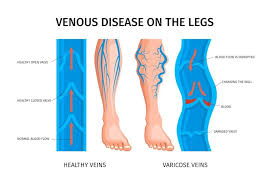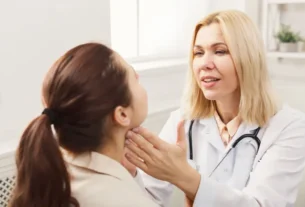Varicose veins are more than just a cosmetic concern. These enlarged, twisted veins—often appearing on the legs—can cause aching, swelling, heaviness, and even skin changes if left untreated. Fortunately, modern medicine offers safe, effective, and minimally invasive treatments to relieve symptoms and restore confidence in your legs.
Whether you’re seeking relief from discomfort or looking to improve your appearance, understanding your varicose veins treatment options is the first step.
Why Varicose Veins Develop
Varicose veins occur when the valves inside your veins—responsible for keeping blood flowing toward your heart—become weak or damaged. This allows blood to pool in the veins, causing them to bulge and twist.
Common risk factors include:
- Family history of vein disease
- Prolonged standing or sitting
- Pregnancy
- Hormonal changes
- Obesity
- Aging
When to Seek Treatment
While some people seek treatment for cosmetic reasons, varicose veins can also be a sign of chronic venous insufficiency (CVI), a progressive condition that requires medical attention.
You should see a vein specialist if you experience:
- Persistent leg pain or heaviness
- Swelling in the legs or ankles
- Skin discoloration or thickening near the ankles
- Open sores or ulcers on the legs
- Burning, itching, or cramping in the legs
Varicose Vein Treatment Options
Thanks to advancements in vein care, most treatments are performed in an outpatient setting with little to no downtime. Here are the most common options:
- Endovenous Laser Therapy (EVLT)
A minimally invasive procedure using laser energy to seal the affected vein, redirecting blood flow to healthier veins.
- Benefits: Quick recovery, minimal discomfort, effective results.
- Radiofrequency Ablation (RFA)
Similar to EVLT, but uses radiofrequency energy to close the vein.
- Benefits: Minimally invasive, quick healing, little to no scarring.
- Sclerotherapy
A special solution is injected into smaller varicose or spider veins, causing them to collapse and fade.
- Benefits: No anesthesia required, quick treatment, excellent for cosmetic improvement.
- VenaSeal™ Closure System
A medical adhesive is used to seal the diseased vein, eliminating the need for heat or anesthesia.
- Benefits: Minimal discomfort, no compression stockings needed afterward in most cases.
- Ambulatory Phlebectomy
Small incisions are made to remove surface varicose veins.
- Benefits: Immediate vein removal, minimal scarring, quick recovery.
What to Expect During Treatment
Most procedures take less than an hour and allow you to return to your daily activities the same day. Your specialist will use ultrasound imaging to guide the treatment and ensure precision. You may be advised to wear compression stockings after certain procedures to support healing and improve circulation.
The Benefits of Treating Varicose Veins
- Relief from pain, swelling, and heaviness
- Prevention of complications such as ulcers or blood clots
- Improved leg appearance and self-confidence
- Better overall circulation and leg health
Take the First Step Toward Healthier Legs
Varicose vein treatment isn’t just about looks—it’s about your health, comfort, and quality of life. If you’ve been living with aching, swollen legs or visible veins, know that effective, minimally invasive solutions are available.
Schedule a consultation with a vein specialist to discuss which treatment is right for you. Your legs—and your future self—will thank you.




